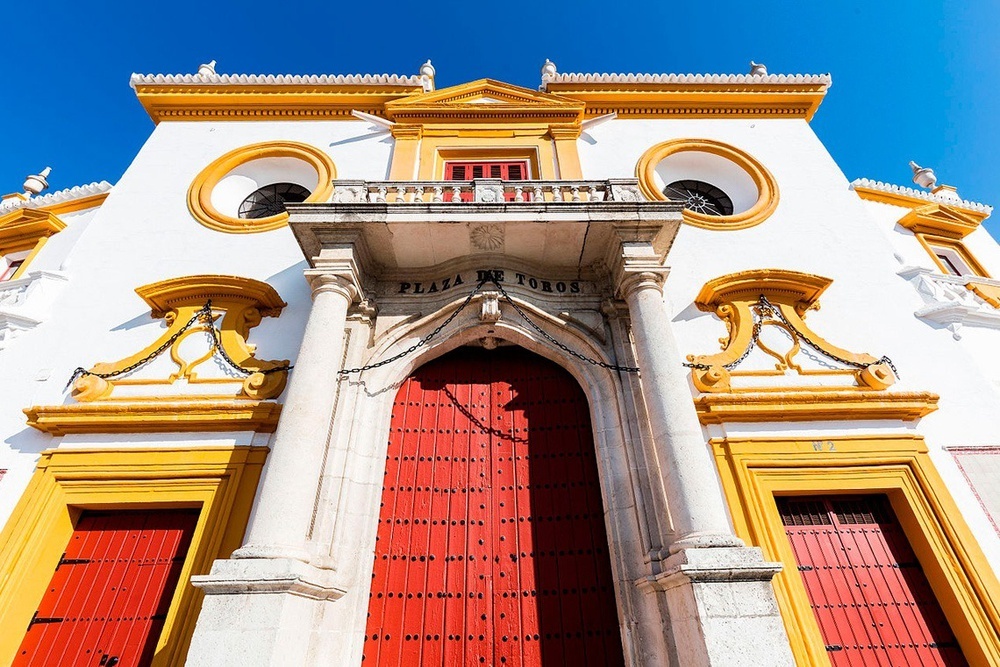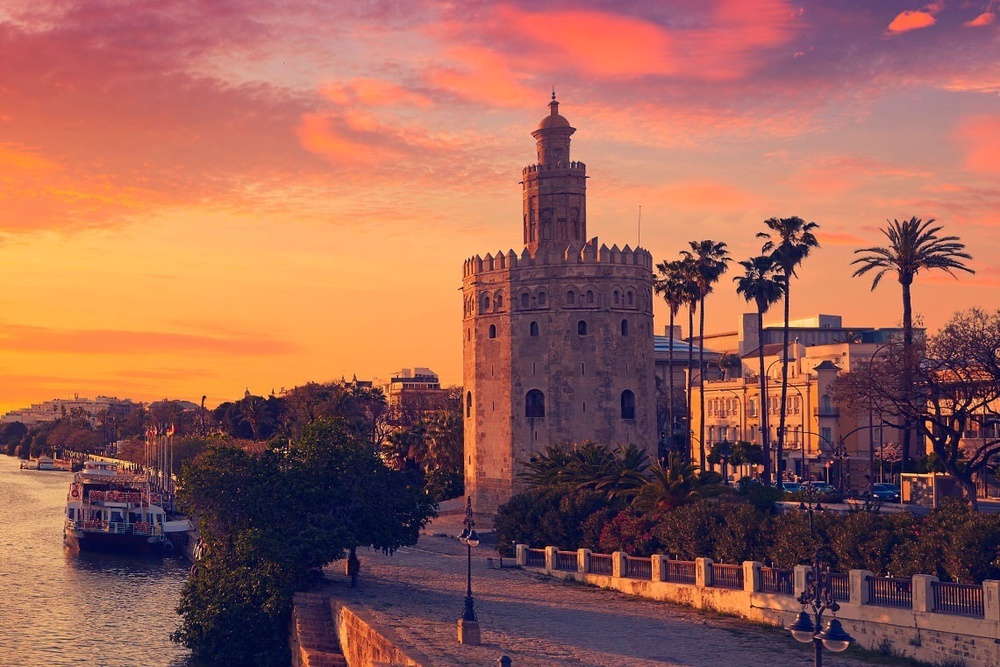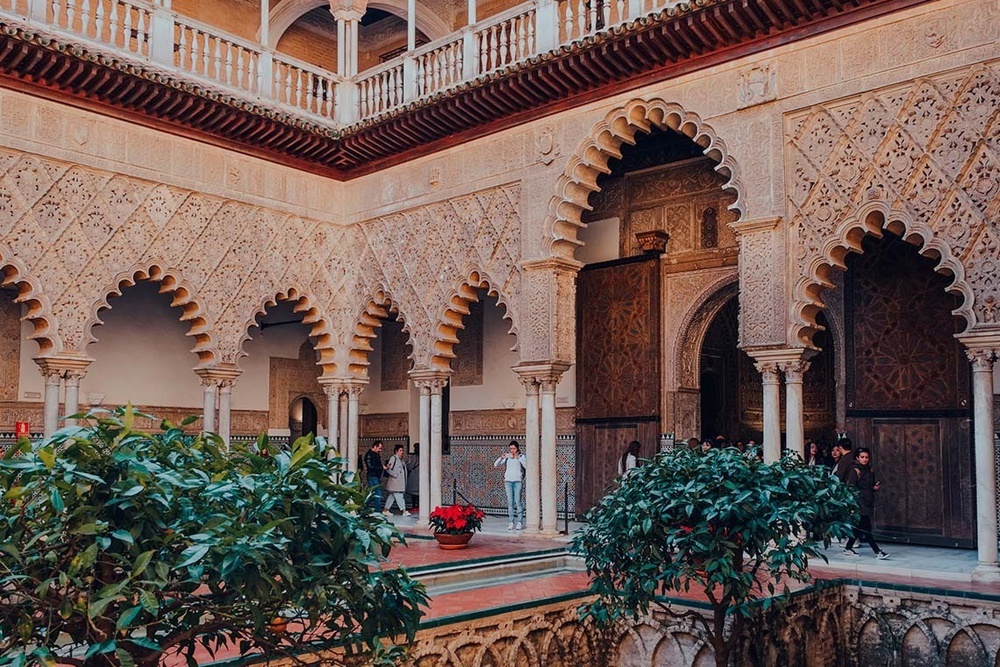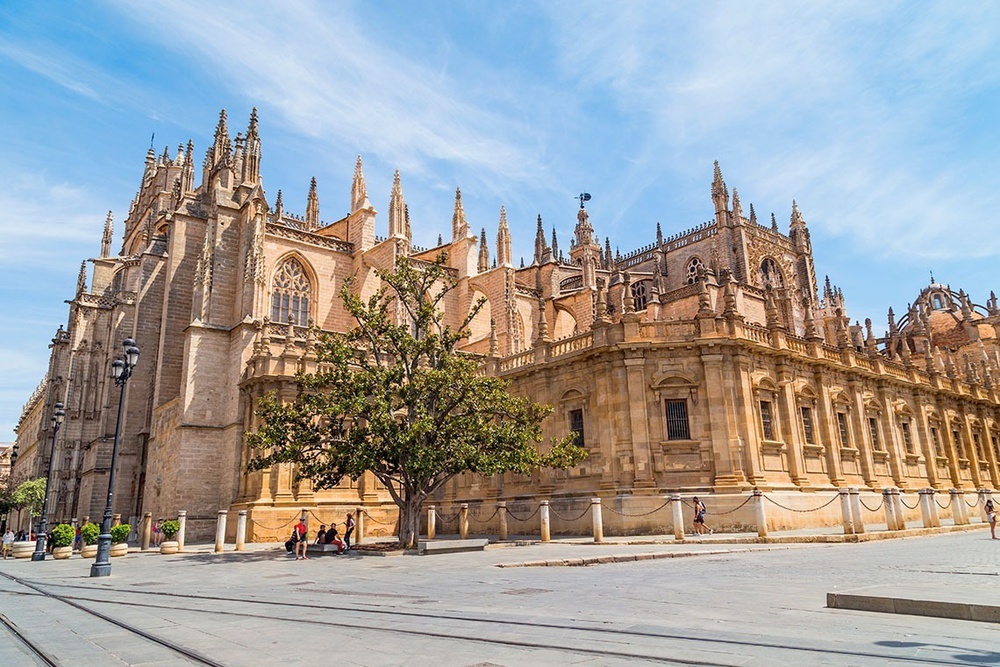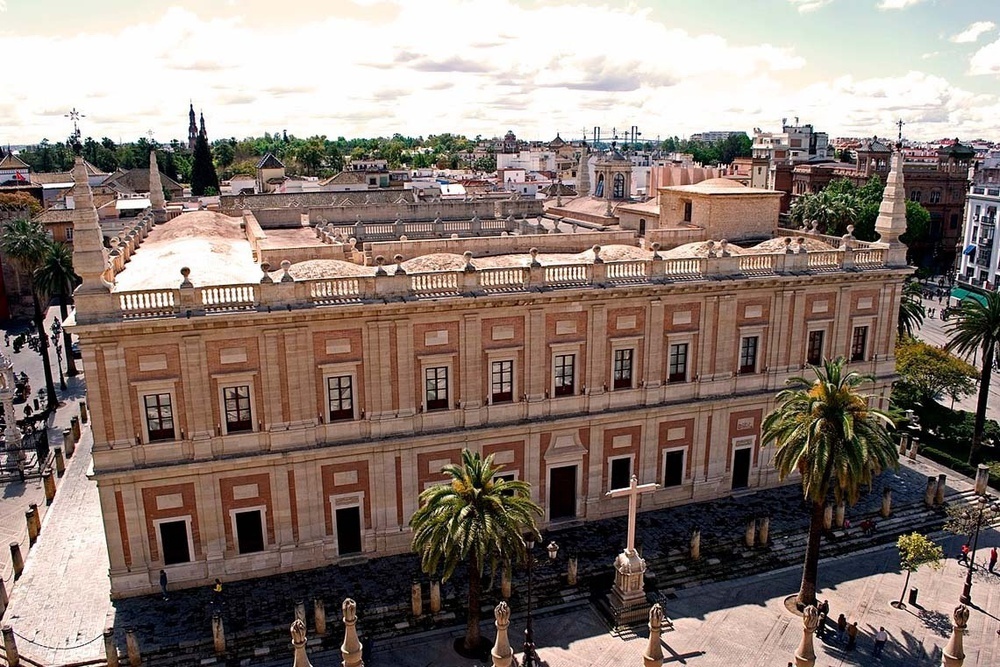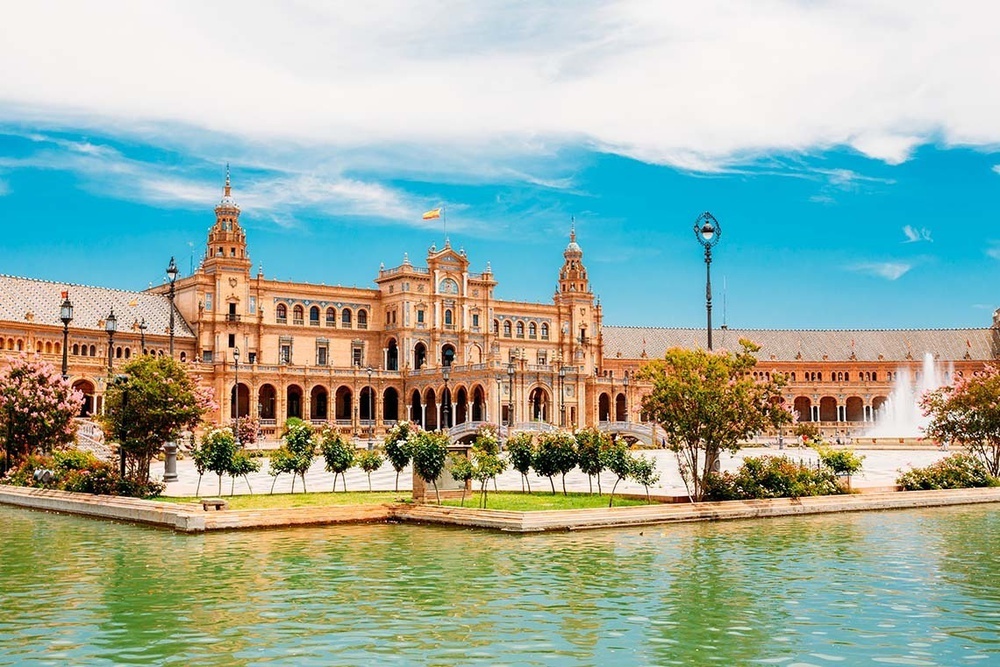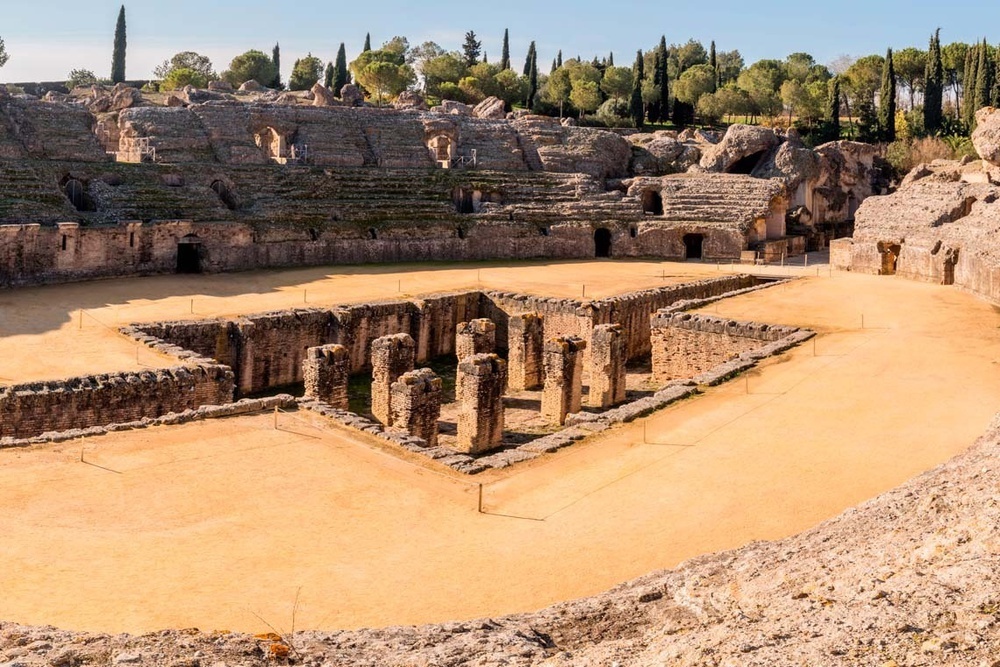Seville Cathedral - Giralda
10 minutes on foot
Of Gothic style, its construction began in 1433 by the architects Ysambret and Carlín on the old Almohad mosque, its construction lasted 65 years being finished in 1507. It was financed by private donations from canons, prelates and some laymen, also establishing a tax on the meat trade, the amount of which was destined to the aforementioned work.
The cathedral has a hall plan with five naves and chapels between the buttresses. It is 116 meters long by 76 meters wide and has 93 stained glass windows.
In 1660 the first Sevillian Academy of Fine Arts was founded in the building.
To the Cloister of the Cathedral, known as Patio de los Naranjos, the access to Puerta del Perdón is made through the so-called Puerta del Perdón, formed by a pointed horseshoe arch and decorated with plasterwork made in 1522 by Bartolomé López, sculptural group on the sides, formed by "San Pedro and San Pablo", and on these, "la Virgen y el Arcángel San Gabriel" and relief of the "Expulsion of the Merchants" located on the arch of the door. The works of this courtyard began in 1172 C. and were concluded in 1196 C. It has been later reformed although it has kept part of its original structure.
Among the sculptural works of interest we will mention; "Virgen de los Reyes" (XIII century, anonymous work of Gothic style), "Virgen de la Sede" (XIII century, anonymous of Gothic style), "Sepulcro del Cardenal Cervantes" (XV century, Gothic work of Lorenzo Mercadante), "Cristo de la Clemencia" (17th century, Baroque work by Martínez Montañés), "San Fernando" (17th century, by Pedro Roldán), "Santas Justa y Rufina" (18th century, Baroque work by Duque Cornejo).
Of the pictorial works we will emphasize; "Virgen de la Antigua" (XVI century, anonymous work of Renaissance style), "San Cristóbal" (XVI century, of Pérez de Alesio), "Inmaculada Concepción" (XVII century, work of Zurbarán of baroque style) and "Visión de San Antonio" (XVII century, of Murillo).
Remains of Christopher Columbus: The image belongs to the funeral monument that collects the supposed remains of Christopher Columbus. On a podium, four kings carry the coffin on their shoulders. These characters represent the kingdoms of Navarre, Valencia, Leon, Castile and Granada.

